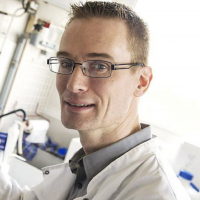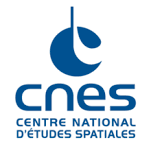Research unit SIMPA
Stress IMmunité Pathogènes
Bâtiment AB, Campus Brabois-Santé
9 Avenue de la Forêt de Haye, BP 20199
54505 VANDOEUVRE-LES-NANCY
FRANCE
Alain LOZNIEWSKI
alain.lozniewski [at] univ-lorraine.fr
Ghislaine HEM
ghislaine.hem [at] univ-lorraine.fr
The aim of researches conducted by the unit "Stress, immunity, pathogens" (UR SIMPA) is to understand how stresses encountered during space missions (chronic gravitational and socio-environmental stresses) affect the development and the responses of immune cells, endogenous and exogenous microorganisms and the interactions between the immune system and central nervous system using a multidisciplinary approach.
These researches are important for the preparation of future long-duration space missions but have also a broader societal interest because stress is omnipresent in our society.
Supervising body(ies)
Key numbers of the unit
- 13 Lecturers and professor
- - Staff scientists
- 10 Qualified research supervisors (HDR)
- 5 Technical and administrative staff
- 3 / 1 phD students /
Postdocs students - 81 Publications ACL
2019-2024
Staff

Jean-Pol FRIPPIAT Co Director UL
Alain LOZNIEWSKI Director UL, CHRU
Ghislaine HEM Administrative Manager
phD students
- 3A these 2025Claire COTTRELFusarium et stress micro-gravitaire : étude dans un modèle in vivo de Galleria mellonella des interactions hôtes pathogène sur le plan immunitaire et de la virulence du champignonFusarium and micro-gravity : Study of the host-pathogen interactions in the in vivo model Galleria mellonellaDirecteur de thèse :Anne DEBOURGOGNE
Pas de soutenance pour le moment
- PIERRE VERMEULENEtude des mécanismes de résistance aux azolés chez le complexe d'espèce Fusarium solaniMechanisms of resistance to azole antifungals in Fusarium solani species complexDirecteur de thèse :Anne DEBOURGOGNECo-directeur de thèse :Marie MACHOUART
- JORDAN CHAMARANDECaractérisation des propriétés de surface, d'adhésion et de formation de biofilm de Parabacteriodes distasonis et étude de son interaction avec son hôte : du potentiel probiotique au pathogène opportunisteCharacterization of the surface, adhesion and biofilm formation properties of Parabacteriodes distasonis and study of its interaction with its host: from the potential probiotic to the opportunistic pathogenDirecteur de thèse :Catherine CAILLIEZ-GRIMALCo-directeur de thèse :Corentine ALAUZET
- GAETANO CALCAGNOEffets des modifications gravitaires rencontrées lors des vols spatiaux sur les cellules dendritiques et la lymphopoïèse TEffects of gravity changes encountered during spaceflight on dendritic cells and T lymphopoiesisDirecteur de thèse :Jean-Pol FRIPPIATCo-directeur de thèse :Sandra KAMINSKI
- MAURINE D'AGOSTINOCaractérisation de l’effet antifongique du composé d’origine végétale CIN-102 sur les champignons filamenteux septés et plus particulièrement Fusarium solaniCharacterization of the antifungal effect of plant-based compound CIN-102 on septal filamentous fungi and more particularly Fusarium solaniDirecteur de thèse :Marie MACHOUARTCo-directeur de thèse :Anne DEBOURGOGNE
Services

GEPAM Core Facility
Created in 2019, the Gravitational Experimental Platform for Animal Models (GEPAM), part of ESA ground-based facilities portfolio since March 2020, allows exposing animals (amphibian or mice) to altered gravity inside a brand-new animal house inaugurated in 2018. This platform comprises three aquatic rotors, one rotor for rodent, and a random positioning machine (RPM) to expose embryos, tadpoles or cells to simulated microgravity.
Using rotors to expose animals to different levels of hypergravity is an efficient way to understand how altered gravity affects various physiological functions, interactions between physiological systems, or animal development. Furthermore, rotors can be used to prepare space experiments.
Contact(s) :
Julie BONNEFOYjulie.bonnefoy [at] univ-lorraine.fr
Publications
- - International Journal of Molecular Sciences - 10.3390/ijms21217863Corentine Alauzet, Lisiane Cunat, Maxime Wack, Laurence Lanfumey, Christine Legrand-Frossi, Alain Lozniewski, Nelly Agrinier, Catherine Cailliez-Grimal, Jean-Pol Frippiat
- - FASEB Journal - 10.1096/fj.202001403RRJudith-Irina Buchheim, Stéphanie Ghislin, Nassima Ouzren, Eliane Albuisson, Anne Vanet, Sandra Matzel, Sergey Ponomarev, Marina Rykova, Alexander Choukér, Jean-Pol Frippiat
- - Journal of Clinical Periodontology - 10.1111/jcpe.13339Marie Dubar, Jean-Pol Frippiat, Thomas Rémen, Amir Boufenzer, Corentine Alauzet, Cédric Baumann, Sébastien Gibot, Catherine Bisson
- - Molecules - 10.3390/molecules24203713Maurine D’agostino, Nicolas Tesse, Jean Pol Frippiat, Marie Machouart, Anne Debourgogne
- - Scientific Reports - 10.1038/s41598-019-45153-8Corentine Alauzet, Lisiane Cunat, Maxime Wack, Alain Lozniewski, Hélène Busby, Nelly Agrinier, Catherine Cailliez-Grimal, Jean-Pol Frippiat
- - FASEB Journal - 10.1096/fj.201801463RGeorg Tascher, Maude Gerbaix, Pauline Maes, Blandine Chazarin, Stephanie Ghislin, Evgenia Antropova, Galina Vassilieva, Nassima Ouzren-Zarhloul, Guillemette Gauquelin-Koch, Laurence Vico, Jean-Pol Frippiat, Fabrice Bertile
- - FASEB Journal - 10.1096/fj.201800969RCoralie Fonte, Sandra Kaminski, Anne Vanet, Laurence Lanfumey, Charles Cohen-Salmon, Stephanie Ghislin, Jean-Pol Frippiat
- - Microbial Drug Resistance - 10.1089/mdr.2017.0311Maurine D'agostino, Thomas Lemmet, Claire Dufay, Amandine Luc, Jean-Pol Frippiat, Marie Machouart, Anne Debourgogne
- - Frontiers in Physiology - 10.3389/fphys.2018.00514Fanny Gaignier, Christine Legrand-Frossi, Emilien Stragier, Julianne Mathiot, Jean-Louis Merlin, Charles Cohen-Salmon, Laurence Lanfumey, Jean-Pol Frippiat
- - Behavioural Brain Research - 10.1016/j.bbr.2017.02.035Guillaume Harlé, Robert Lalonde, Coralie Fonte, Armelle Ropars, Jean-Pol Frippiat, Catherine Strazielle








